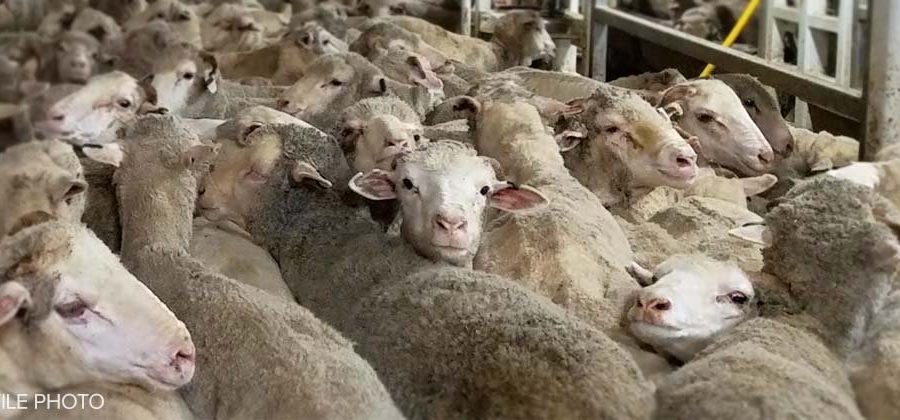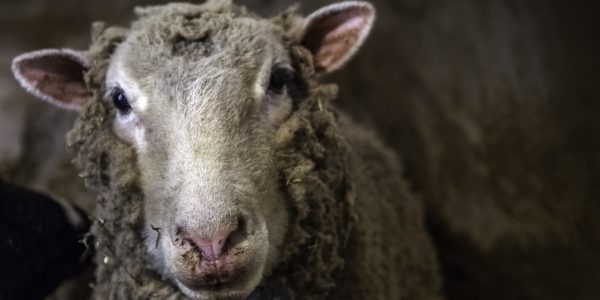Heat stress
Deaths on live sheep shipments have historically increased significantly during the months from May to October when sheep are exported from Australian winters to the high heat and humidity of Middle Eastern summers. Admissions by the live export industry that mortalities can double or even triple in certain climatic conditions were first made in 1985.
In high humidity, the manure pad will melt and become boggy, covering animals in a ‘faecal jacket’. This exacerbates heat stress in sheep, results in decreased levels of hygiene, increased levels of infection, and increased ammonia emissions causing health risks to both livestock and crew.
OIE CHAPTER 7.2. TRANSPORT OF ANIMALS BY SEA
7.2.5. Planning the journey
2. Preparation of animals for the journey
c) Extreme weather conditions are hazards for animals undergoing transport and require appropriate vessel design to minimise risks. Special precautions should be taken for animals that have not been acclimatised or which are unsuited to either hot or cold conditions. In some extreme conditions of heat or cold, animals should not be transported at all.
4. Vessel and container design and maintenance
e) Vessels should have adequate ventilation to meet variations in climate and the thermo-regulatory needs of the animal species being transported. The ventilation system should be effective when the vessel is stationary.
7. Space allowance
b) the amount of space required, including headroom, depends on the species of animal and should allow the necessary thermoregulation.
7.2.8. Loading
2. Facilities
b) Ventilation during loading and the journey should provide for fresh air, and the removal of excessive heat, humidity and noxious fumes (such as ammonia and carbon monoxide). Under warm and hot conditions, ventilation should allow for the adequate convective cooling of each animal. In some instances, adequate ventilation can be achieved by increasing the space allowance for animals.
ASEL STANDARD 5: ONBOARD MANAGEMENT OF LIVESTOCK
5.1 Guiding principle
Onboard facilities, management and husbandry must be adequate to maintain the health and welfare of livestock throughout the sea voyage:
5.2 Required outcomes
1) The voyage is completed safely.
2) Adequate livestock services are maintained throughout the voyage.
3) Onboard care and management of the livestock is adequate to maintain their health and welfare throughout the voyage.
5.6 Standard for onboard management of livestock
S5.6 e) Ventilation must be monitored regularly each day to ensure adequate thermoregulation of the livestock
Stocking density
Sheep are confined in pens for up to 25 days onboard live export vessels. Despite this, permissible stocking densities were not determined by welfare requirements, rather by how many animals can fit into a pen.
According to the Federal Department of Agriculture, ‘[e]ach animal must have access to food and water on demand and enough space to lie down.’
As a result, current standards do not allow sheep the room to lie down and rest during long voyages, nor do they provide ready access to food and water. Standards are in breach of international (OIE) guidelines (which Australian standards are said to meet) and contrary to the required standards in the Australian government’s ‘Position statement on the Export of Livestock’.
OIE CHAPTER 7.1. INTRODUCTION TO THE RECOMMENDATIONS FOR ANIMAL WELFARE
7.1.4. General principles
4) The physical environment should allow comfortable resting, safe and comfortable movement, including normal postural changes, and the opportunity to perform the types of natural behaviors the animals are motivated to perform.
OIE CHAPTER 7.2. TRANSPORT OF ANIMALS BY SEA
7.2.9. Travel
1. General considerations
d) Adequate access to suitable feed and water should be ensured for all animals in each pen.
OIE CHAPTER 7.2. TRANSPORT OF ANIMALS BY SEA
7.2.5. Planning the journey
7. Space allowance
b) Each animal should be able to assume its natural position for transport … When animals lie down, there should be enough space for every animal to adopt a normal lying posture.
8. Ability to observe animals during the journey
Animals should be positioned to enable each animal to be observed regularly and clearly by an animal handler or other responsible person, during the journey to ensure their safety and good welfare.
ASEL STANDARD 5: ONBOARD MANAGEMENT OF LIVESTOCK
5.1 Guiding principle
Onboard facilities, management and husbandry must be adequate to maintain the health and welfare of livestock throughout the sea voyage:
5.2 Required outcomes
1) The voyage is completed safely.
2) Adequate livestock services are maintained throughout the voyage.
3) Onboard care and management of the livestock is adequate to maintain their health and welfare throughout the voyage.
S5.5
All livestock on the vessel must have access to adequate water of a quality to maintain good health and suitable feed to satisfy their energy requirements, taking into consideration any particular needs of the livestock species, class and age.









